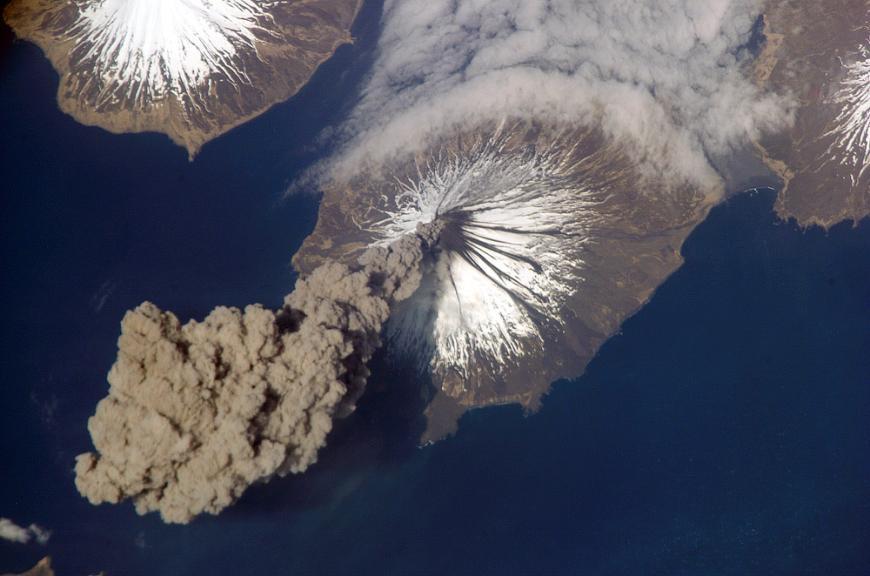
Lead supervisor: Francesco Muschitiello, Geography
Co-supervisor: Marco Aquino-Lopez, Geography
Brief summary:
This project aims at developing a new quantitative method for correlation of ice cores that will enable generating improved reconstructions of volcanism and solar forcing of the past 60,000 years.
Importance of the area of research concerned:
The correlation of ice-core records plays a central role in paleoclimate research as it iused to develop consistent timescales that allow quantifying how rapidly climate change propagates across the globe, as well as reconstructing volcanism and solar activity histories. To present, correlations are mostly performed manually using visual tie points observed in atmospheric methane records (e.g. CH4; Buizert et al., 2015), volcanic signatures of large eruptions (e.g. SO4; Svensson et al., 2020), and cosmogenic radionuclide data of solar irradiance (e.g. 10Be; Raisbeck et al., 2017). However, this correlation method often hinges on a limited number of tie points, is inherently subjective, and does not provide a quantification of the confidence of the correlation.
Machine learning algorithms can help us address these limitations and improve the alignment of ice core records and the underlying climatic/environmental data sets. In particular, they have an enormous and, as of yet, underexploited potential in climate science for automating the correlation of ice cores, replacing subjectivity with reproducibility and deriving confidence bands associated with the correlation procedure.
Project summary :
This project aims at developing a numerical approach for automated and continuous synchronization of ice-core data sets. The approach will leverage machine learning techniques to identify the correlation probabilities between reconstructions of global volcanisms, and solar activity. The method will consider correlations based on multiple reconstructions in each ice core and incorporate independent chrono-stratigraphic information. The algorithm will provide an essential tool to construct robust ice-core timescales and will bring a new degree of accuracy and precision to the use of synchronization in ice-core science. More importantly, the methodology will be applied to derive new reconstructions of volcanism and solar activity for the past 60,000 years, which will provide fundamental knowledge on the sensitivity of the climate system to external natural forcing.
What will the student do?:
The successful applicant will apply machine learning methods to develop an automated alignment algorithm that models correlations of ice cores based on the signal registered in volcanic and solar activity data sets from Greenlandic and Antarctic ice cores. High-resolution records of sulfur, sulfate, chloride, and electrical conductivity measurements of the ice will be employed as indicators of volcanic signals, whereas records of cosmogenic isotopes such as 10Be and 36Cl will be used to infer changes in solar variability. The new numerical approach will be used to establish a precise synchronization of Greenland and Antarctic ice cores, as well as to generate climate-forcing reconstructions of volcanic emission strength and solar irradiance.
References - references should provide further reading about the project:
Buizert, C., K. M. Cuffey, J. P. Severinghaus, D. Baggenstos, T. J. Fudge, E. J. Steig, B. R. Markle et al. "The WAIS Divide deep ice core WD2014 chronology–Part 1: Methane synchronization (68–31 ka BP) and the gas age–ice age difference." Climate of the Past 11, no. 2 (2015): 153-173.
Svensson, Anders, Dorthe Dahl-Jensen, Jørgen Peder Steffensen, Thomas Blunier, Sune O. Rasmussen, Bo M. Vinther, Paul Vallelonga et al. "Bipolar volcanic synchronization of abrupt climate change in Greenland and Antarctic ice cores during the last glacial period." Climate of the Past 16, no. 4 (2020): 1565-1580.
Raisbeck, Grant M., Alexandre Cauquoin, Jean Jouzel, Amaelle Landais, Jean-Robert Petit, Vladimir Y. Lipenkov, Juerg Beer et al. "An improved north–south synchronization of ice core records around the 41 kyr 10 Be peak." Climate of the Past 13, no. 3 (2017): 217-229.
Applying
You can find out about applying for this project on the Department of Geography page.